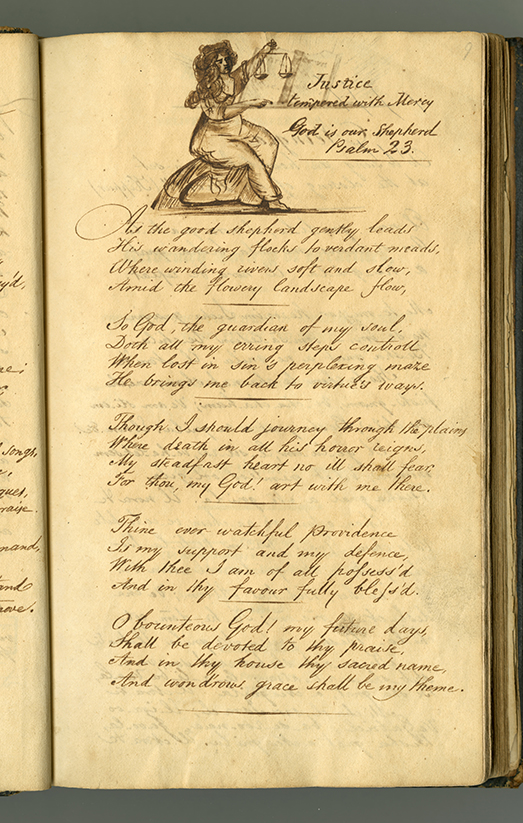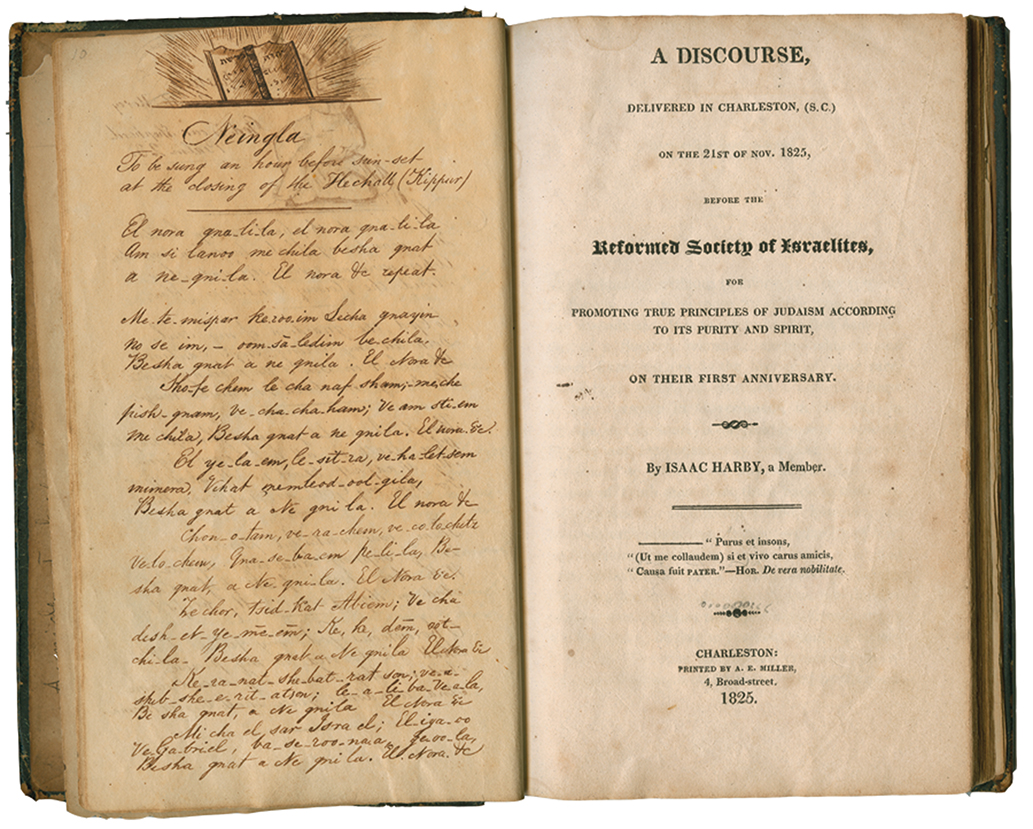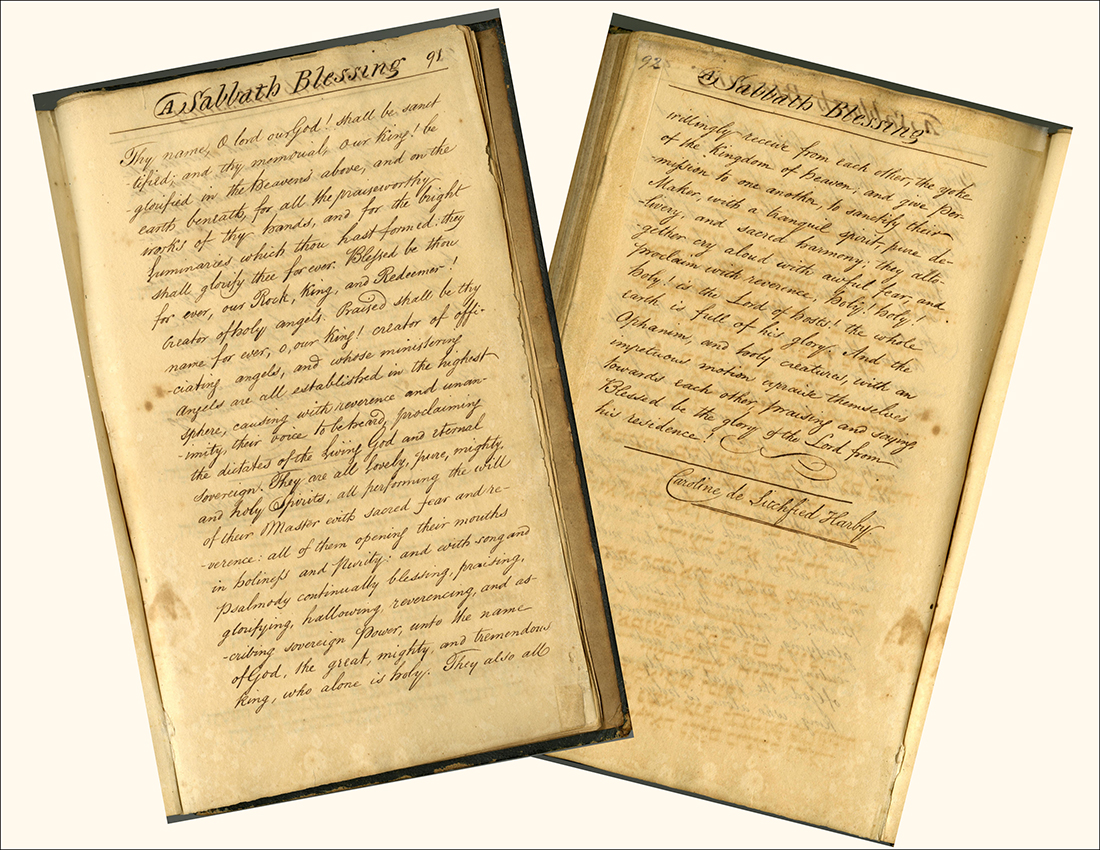Reformed Society Of Israelites
The first Jewish reform movement in America
After their petition for reform was rejected by the adjuntaCouncil or governing body of a synagogue. of Kahal Kadosh Beth Elohim, a group of some forty young, mainly native-born Jewish Charlestonians created a separate organization, the Reformed Society of Israelites, adopted a constitution, and applied to the state legislature for incorporation. At some point, probably in 1825, they began holding their own services, using manuscript prayer books several members wrote by hand. They appealed to the general public for donations toward construction of a new synagogue, but failed to raise sufficient funds. Instead, the Society met in Seyle’s Hall, a rental facility. Services included a choir, hymns, and instrumental music. Men did not cover their heads.
Beginning in the 1820s, Samuel Seyle had provided Charleston with public facilities on King Street, including a “long room” or a meeting and banquet hall. The space was used by groups ranging from the Carpenters’ Society, Fellowship Society, Charleston Library Society, Charleston Ancient Battalion of Artillery, and Grand Lodge, Ancient Free Masons of South Carolina (Seyle himself was a member of Orange Lodge, No. 14), as well as the Reformed Society of Israelites and the Hebrew Benevolent Society. The facility was referred to in various ways: the Masonic Grand Lodge met in “the Grand Lodge Room, Brother Seyle’s”; the Reformed Society called it simply, “Samuel Seyle’s,” and the Hebrew Benevolent Society held their anniversary meetings in “Seyle’s Room” or “Seyle’s Hall.”
In 1828, Abraham Moïse II became president of the Reformed Society, and two years later published its prayer book, the first radical liturgy produced anywhere in the world. He had lost two of his closest collaborators—Isaac Harby moved to New York in 1828 and died in that city within a few months; David Nunes Carvalho relocated to Baltimore. In 1833, the Society abandoned its dream of building a new synagogue and resolved to return the money (with interest) that had been donated. In 1836, Moïse himself rejoined KKBE and began working for reform from within.
Meanwhile, Seyle’s Hall continued to serve other clientele. Before 1830, Seyle acquired a lot on the west side of Meeting Street, a few doors north of Market Street. Here he could provide space for large displays, ranging from the prizewinning animals honored by the Agricultural Society to 3,000-square-foot panoramic paintings. Gradually he turned his King Street building over to retail and residential uses, and built a new Long Room on Meeting Street. By 1837, the “very commodious hall of Mr. Seyle” had a capacity of more than 700 people. Sweeping across the Charleston peninsula from King Street nearly to the Cooper River, the great fire of 1838 Late in the evening of Friday, April 27, 1838, a fire began near the corner of Beresford (today’s Fulton) Street and King Street. It was driven by wind from the southwest to East Bay Street and beyond, destroying more than 1,100 structures—dwellings, tenements, boarding houses, stores, workshops, kitchens, stables and sheds, and four houses of worship, including Synagogue Kahal Kadosh Beth Elohim, a fixture of the city skyline since its completion in 1794. Nearly 70 of the 560 homes and businesses that burned were owned or rented by Jews.destroyed Seyle’s Long Room; although Seyle rebuilt his business, the second structure no longer survives.

Isaac Harby’s “Justice tempered with Mercy”
Page from a prayer book written by reformer Isaac Harby (1788–1828) for his sister Caroline de Litchfield Harby (1801–1876), ca. 1825. Harby’s inclusion of a prayer composed by Caroline marks the first step in American Judaism toward incorporating women’s voices into Sabbath worship. Bound into the manuscript is the 1825 printing of Harby’s Discourse delivered on the first anniversary of the Reformed Society of Israelites.
Isaac Harby’s “Articles of Faith”
Page from a prayer book written by reformer Isaac Harby (1788–1828) for his sister Caroline de Litchfield Harby (1801–1876), ca. 1825. Harby’s inclusion of a prayer composed by Caroline marks the first step in American Judaism toward incorporating women’s voices into Sabbath worship. Bound into the manuscript is the 1825 printing of Harby’s Discourse delivered on the first anniversary of the Reformed Society of Israelites.
Isaac Harby’s Discourse
Page from a prayer book written by reformer Isaac Harby (1788–1828) for his sister Caroline de Litchfield Harby (1801–1876), ca. 1825. Harby’s inclusion of a prayer composed by Caroline marks the first step in American Judaism toward incorporating women’s voices into Sabbath worship. Bound into the manuscript is the 1825 printing of Harby’s Discourse delivered on the first anniversary of the Reformed Society of Israelites.
Isaac Harby’s inscription to Caroline
Page from a prayer book written by reformer Isaac Harby (1788–1828) for his sister Caroline de Litchfield Harby (1801–1876), ca. 1825. Harby’s inclusion of a prayer composed by Caroline marks the first step in American Judaism toward incorporating women’s voices into Sabbath worship. Bound into the manuscript is the 1825 printing of Harby’s Discourse delivered on the first anniversary of the Reformed Society of Israelites.